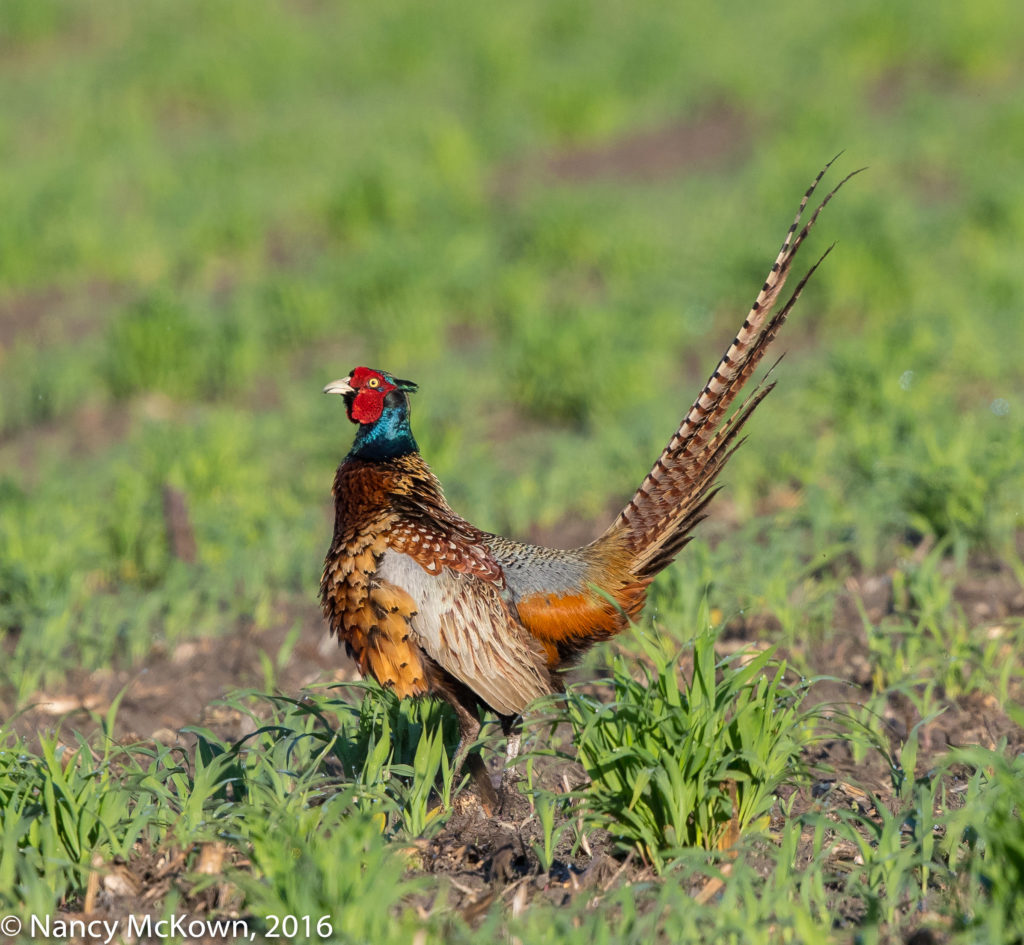Photographing a Ring Necked Pheasant
The last time I photographed a Ring Necked Pheasant it was early Spring. At that time of year, these flamboyant birds have reason to be out-and-about to conspicuously flaunt their stuff. In the Fall, they’re still highly adorned and colorful, but they seem a bit more cautious.

ISO800; f/9; 1/1250
How do Modern Cameras Acquire Focus So Fast?
I came across this stunning male pheasant while driving in the Allegan State Game Area. He wasn’t especially close, but I knew that I would spook him if I got out of the car to get closer. I rested the camera and lens on the car door and prepared to shoot. The lens (500mm f/4 L II –always well behaved) rested comfortably with no obstacles in its trajectory. The camera was set to Al Servo focus mode and high speed continuous shooting. When I half pressed the shutter button, the len’s quiet ultrasonic focusing motors immediately activated, shuffling just a touch to lock focus. I took a few shots to test the area of focus (DOF), then waited hopefully for the bird to move closer to the camera.
Passive Auto Focus Systems
The most common modern DSLR focusing system is referred to as “passive”. A passive auto focus system waits until light information passes through the lens to the sensor and light meter – and then makes its calculations to determine focus. Precisions systems on modern cameras are capable of achieving a near instantaneous and accurate fix on focusing even in low light by using sensor based sharpness detecting/gauging tools, referred to in the literature as “phase detection” and “contrast measurement”. For more details on these systems, press this link.
Light is key. As the light dims, the camera’s sensors have more difficulty seeing edges and contrasting tones. Auto focus takes longer and becomes less accurate.
Active Auto Focus Systems
Active systems don’t wait for light to pass through the lens to determine focus. Instead these devices emit (infrared or visable) light or sound and then measure it when it bounces back. This DSLR camera auto focus technology is considered old school. (NOTE: Auto focus assist lamps that throw light to help cameras focus are not considered to be Active systems, but instead serve as a “second opinion” for a Passive focusing system.)

Alert and Tail High
ISO 800; f/9; 1/1250 Second
Circumstances That Impact Passive AutoFocus
- Some cameras include a “focus beam emitter” which facilitates focusing. Canon cameras do NOT, so I either carry around a flashlight to help the lens see, or heaven forbid, switch to manual focusing and rely on my eyes to accurately focus.
- A focus assist beam on an external flash device can shed more light and thus assist the autofocusing system. This assumes that the subject is stationary and close enough to the camera to be affected by the beam. (NOTE: Canon cameras utilize flash based focus assist beams only when the camera is set to one-shot autofocus mode.)
- High quality, expensive lenses are designed for speed and precision and are more likely to deliver tack sharp results. I’ve purchased mediocre lenses (Canon and third party) and had to deal with tight max apertures, slow autofocus and subpar image quality, not to mention distortions and chromatic aberrations.
- Lenses on which the aperture opens wide (greater than f/2.8) are referred to as “fast” lenses. The wider an aperture opens to allow maximum light on the focal plane, the “faster” and more accurately the lens can focus. The more light transmitting through the lens, the more flexibility the photographer has with exposure parameters. (NOTE: A DSLR camera always auto focuses with the lens set on its widest aperture. It immediately switches to the aperture set for proper exposure when the shutter is depressed.)
Auto Focus Magic
It is nothing short of remarkable how fast and precise high end DSLR lenses acquire focus, no matter what auto focusing mode is set. It’s easy to forget how much bird photographers depend on this technology to get their shots. If you need a reminder, just try switching it off and depending on manual focus for a while.








